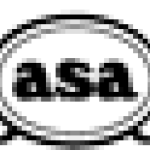- Industrie: Aviation
- Number of terms: 16387
- Number of blossaries: 0
- Company Profile:
Aviation Supplies & Academics, Inc. (ASA) develops and markets aviation supplies, software, and books for pilots, flight instructors, flight engineers, airline professionals, air traffic controllers, flight attendants, aviation technicians and enthusiasts. Established in 1947, ASA also provides ...
A type of concentration-cell corrosion that forms in the metal skin of an aircraft along the edges of a lap joint where moisture can be trapped. When trapped water absorbs oxygen from the air, it attracts electrons from the metal and forms negative hydroxide ions.
When electrons are taken from the metal, positive metallic ions are left, and these positive ions collect in the stagnant moisture trapped between the skins in the lap joint. The positive ions attract electrons from the metal along the edges of the lap joint and cause the metal to unite with the hydroxide ions in the moisture to form a salt. This salt is corrosion.
Industry:Aviation
A type of connection used for three-phase alternating-current generators, motors, and transformers. Two of the phase windings are in series, across the third phase winding.
The term delta connection comes from the symbol for this type of connection, which is drawn in such a way that it shows the windings arranged in the form of a triangle, or delta. The current flowing between any two leads in a delta-connected circuit is 1.73 times the current flowing in any single winding.
Industry:Aviation
A type of connection used in the exhaust system of a reciprocating engine that provides for the expansion of the system components as they get hot. The exhaust system is assembled and connected together with ball joints, bellows, and slip joints that allow the system to move and not crack. Slip joints fit together loosely when the system is cold, but tighten when the components reach their operating temperature.
Industry:Aviation
A type of control in which part of the output is fed back to the input. This allows the input to continually compare the command signals with the output, showing the extent to which the commands have been complied with.
Industry:Aviation
A type of control in which the magnitude of the corrective action (the output) is directly proportional to the magnitude of the error (the input signal). An autopilot controls an airplane by proportional control. If a wing drops slightly (the error), the autopilot servo causes the proper aileron movement to smoothly return the aircraft to level flight.
Industry:Aviation
A type of control system in which a small signal or small force is used to control a much larger force. In a hydraulic servomechanism, a sensor detects that some type of output movement is needed. A control valve directs hydraulic fluid into a hydraulic actuator, and the movement takes place. A feedback sensor compares the amount the actuator moves with the amount of movement the original sensor called for, and when the actuator has moved the correct amount, the selector valve is shut off.
Industry:Aviation
A type of control system in which normal operation of the flight controls causes hydraulic or pneumatic actuators to assist in moving the control surfaces. This reduces the force needed by the pilot. An irreversible power control system is a type of system that does not allow forces on the flight control surfaces to be fed back to the cockpit control.
Industry:Aviation
A type of control that automatically puts the controlled device in a safe condition if the control system should fail.
Industry:Aviation
A type of corrosion that forms on the surface of metal as small, localized pits filled with the salts of corrosion.
Industry:Aviation
A type of corrosion which forms along the boundaries of the grains inside a piece of metal alloy. Stress corrosion and exfoliation corrosion are types of inter-granular corrosion.
Industry:Aviation
